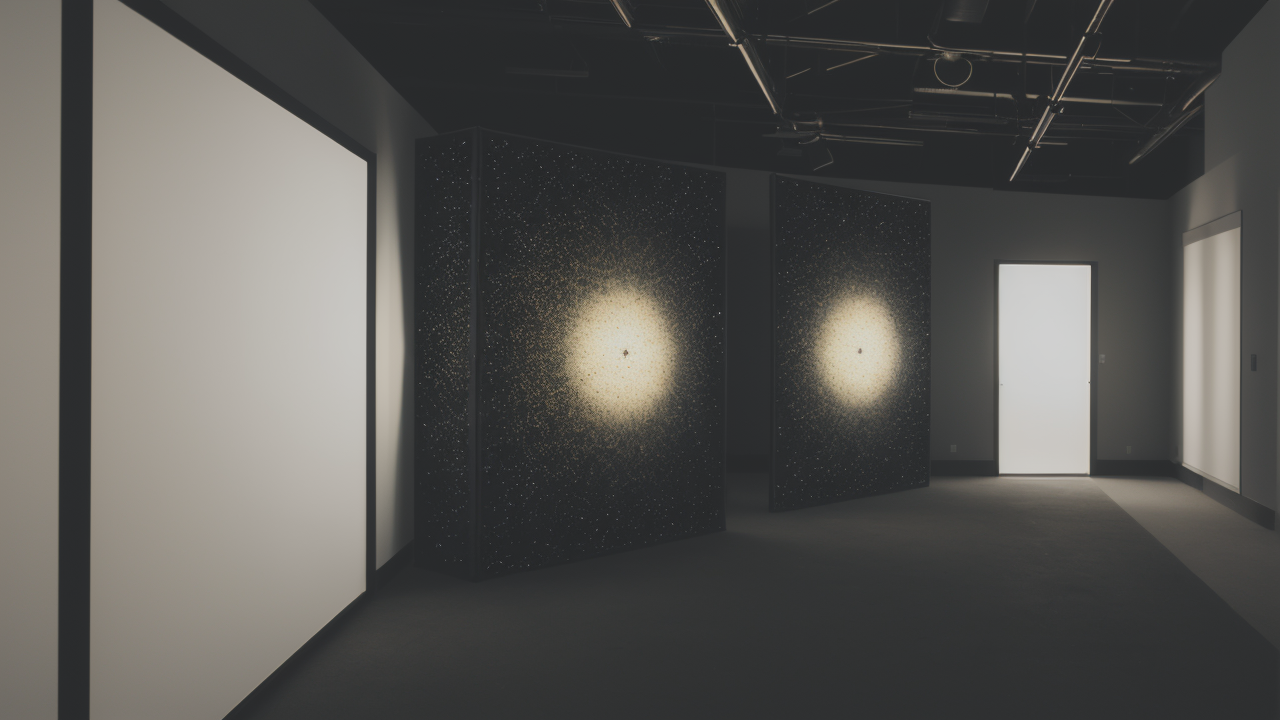
Transforming Spaces: The Impact of Colorful Abstract Paintings in Home Decor
Understanding the Core Principles of Contemporary Minimalist Art
The Importance of Simplicity in Design
Simplicity is the heart of minimalist art. It's about stripping away excess to reveal the essence. This approach uses clean lines, basic shapes, and limited colors. The goal is to create impact through restraint.

Minimalist artists believe that less is more. They aim to convey powerful messages with fewer elements. By reducing clutter, they help viewers focus on what's truly important. This often leads to a sense of calm and clarity in the artwork.
In practice, artists carefully choose each element. Every line, shape, and color must serve a purpose. Nothing is added without thought. This results in striking artwork that speaks volumes with little.
Balancing Aesthetics and Emotions in Artwork
Minimalist art isn't just about looks. It also aims to evoke emotions. The challenge is to balance visual appeal with emotional depth. Artists must convey complex feelings using limited means.
Color plays a crucial role in this balance. A single hue can set the mood for an entire piece. Even the absence of color can be powerful. White space, for example, can create a sense of peace or isolation.
Composition is another key factor. The placement of elements guides the viewer's eye and emotions. An off-center object might create tension. Centered elements often feel stable. These choices greatly impact the artwork's emotional resonance.
The Role of Color Theory in Minimalism
Color theory is vital in minimalist art, despite the limited palette. Understanding how colors interact is crucial. This knowledge helps artists create harmony or contrast in their work.
Minimalist artists often use monochromatic or analogous color schemes. These create a sense of unity and calm. Complementary colors can add drama when used sparingly. Even subtle shade variations can have a big impact in a minimalist piece.
The emotional impact of color is also important. Warm colors like red or orange can evoke energy. Cool colors like blue or green often suggest tranquility. By carefully selecting colors, artists can guide the viewer's emotional response to their work.
Step-by-Step Guide to Creating a Palette Canvas
Selecting the Right Colors for Your Artwork
Choosing colors for a minimalist palette canvas is crucial. Start by deciding on the mood you want to convey. This will guide your color selection. Remember, in minimalism, less is often more.

Consider using a limited color palette. Two to three colors can create a striking effect. You might choose one main color and use others as accents. Think about color relationships. Complementary colors can create vibrant contrasts.
Don't forget about neutrals. White, black, and grays can be powerful in minimalist art. They can provide balance or emphasize other colors. Test different combinations before finalizing your palette. This ensures your chosen colors work well together.
The Process of Applying Colors to Canvas
Applying color to a palette canvas requires precision and patience. Start with a clean, primed canvas. This ensures the best color adhesion and longevity. Choose high-quality paints that match your selected palette.
Begin by applying base colors. Use smooth, even strokes for a clean finish. Allow each layer to dry completely before adding more. This prevents unwanted mixing and maintains color purity.
For crisp edges, use painter's tape. This is especially useful for geometric designs. Remove the tape carefully once the paint is dry. For softer edges, blend colors while they're still wet. This creates subtle transitions between hues.
Tips for Maintaining High Color Fidelity
Maintaining color fidelity is crucial in minimalist art. Start with quality materials. High-grade paints and canvas ensure true, lasting colors. Store your artwork away from direct sunlight to prevent fading.
Use a color-matching system when mixing paints. This helps maintain consistency across your work. Keep detailed notes on your color mixes. This allows you to recreate exact shades if needed.
Consider the lighting in your workspace. Natural light is best for accurate color perception. If using artificial light, choose bulbs with a high color rendering index. This ensures colors appear as intended.
Advanced Techniques for Contemporary Minimalist Art
Integrating Technology in Artwork Creation
Technology offers new possibilities for minimalist art. Digital tools can help plan and execute complex designs. Software like Adobe Illustrator is great for creating precise geometric shapes.

3D modeling programs allow artists to visualize their work before creation. This can be helpful for large-scale or installation pieces. Virtual reality tools are opening up new ways to experience minimalist art.
Some artists incorporate technology directly into their work. LED lights can add a dynamic element to static pieces. Interactive installations using sensors can respond to viewer movements. These approaches push the boundaries of traditional minimalist art.
Using Texture and Patterns to Enhance Minimalist Designs
Texture and pattern can add depth to minimalist art without compromising simplicity. Subtle textures can create interest in monochrome works. This might involve using different paint techniques or materials.
Patterns, when used sparingly, can enhance minimalist designs. Simple, repeating shapes can create rhythm and movement. The key is to keep patterns subtle and aligned with the overall minimalist aesthetic.
Consider the interplay between smooth and textured surfaces. This contrast can create visual interest. Experiment with different materials like wood, metal, or fabric. These can add tactile elements to your artwork.
Creating Interactive and Immersive Art Experiences
Interactive art engages viewers in new ways. In minimalist contexts, this often means subtle interactions. Simple motion sensors can trigger changes in lighting or sound. This creates a dynamic experience while maintaining simplicity.
Immersive installations take minimalism beyond the canvas. Large-scale works can transform entire spaces. Use of light, shadow, and space becomes crucial. These elements can create powerful experiences with minimal visual elements.
Consider how viewers move through the space. The placement of artworks can guide this journey. Negative space becomes as important as the art itself. This approach turns the viewing experience into part of the artwork.


